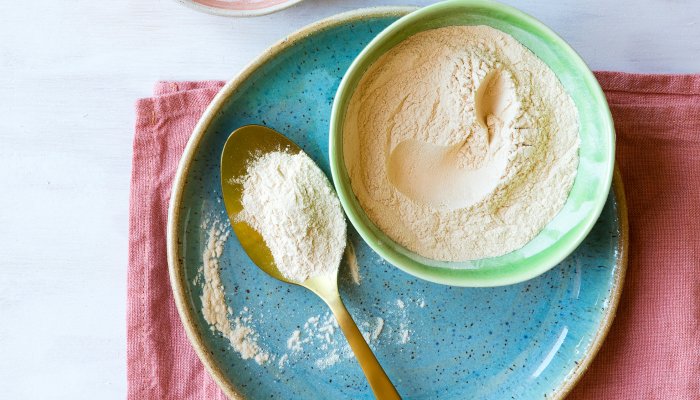
Before we get into the different types of protein powder, let’s talk about how to assess protein quality.
The amino acid profile of a protein powder matters because there are nine essential amino acids (EAAs) your body cannot make that you must get from your diet. Leucine is especially important for muscle protein synthesis (MPS).
Performance dietitian and consultant Kelly Jones, M.S., R.D., CSSD, suggests checking the amount of each amino acid on the label or on the supplement’s website. “Look for about 10 grams of EAAs total1, with 2 to 3 grams coming from leucine2. This can easily be achieved via a whey protein, soy protein, or certain plant protein blends, including pea and brown rice, or pea and chia.”
Note that depending on the type of protein, you may need to eat more to reach this leucine threshold. “In whey protein, leucine is about 12%, so 23 grams of whey protein isolate will trigger it [muscle protein synthesis]. Whereas in soy protein isolate, it’s about 7.8%, so now you need 33 or 34 grams,” protein and amino acid researcher Don Layman, Ph.D., previously told mindbodygreen.
Protein powders can help fulfill your daily protein needs. However, “Since protein powders are typically isolated or concentrated sources of just protein, they are also typically lower in micronutrients than the actual food source it is derived from,” Stephan van Vliet, Ph.D., a scientist in the Center for Human Nutrition Studies at Utah State University, tells mindbodygreen.
“While protein powders can help meet protein needs, especially in the case of athletes, older populations, or hospitalized patients with an increased need for protein, consuming protein from whole foods is typically preferred to get the full spectrum of nutrients that whole foods can provide,” van Vliet adds.
